These toolkits are designed to eliminate bias across different areas of the workplace, using specific “bias interrupters” that change existing norms and practices to create more equitable workplaces. Toolkits include: Compensation, Hiring and Recruitment, Family Leave, and more. Employers may find this tool useful for developing successful, equitable workplace practices. Additionally, workforce development and worker advocacy professionals may find this toolkit helpful to share with their employer-partners.
This toolkit is a collection of over 60 workplace policies that can help support, stabilize, and retain employees in low-wage work. The toolkit also contains sections on gender-based violence workers may be experiencing in their home lives and second-chance employment for formerly incarcerated individuals After a quick registration for a free account, the Employer Toolkit search feature can help you identify specific policy recommendations, many of which include sample HR policy language that companies can draw from. Topics include wages, benefits, child care, paid time off, scheduling, recruitment, training and education, and transportation.
Today’s politicized environment poses unique challenges for worker rights advocates. With Congress often divided, and many state and local governments as well, the path to improving worker rights through legislation is narrow. Nonetheless, we have seen some remarkable progress on worker rights over the last few years through executive action. Leveraging executive action, however, is not a straightforward and easily discernible path for grassroots activists and organizations interested in advancing worker rights and job quality.
In the “Toolkit: An Organizer’s Guide to Executive Action,” Mary Beth Maxwell, executive director of Workshop, demystifies and democratizes the policy-making process by sharing lessons learned during her time in federal government. Toolkit offers a blueprint for advocates inside and outside on how they can collaborate to build an economy that works for all and, in the process, rebuild a healthy democracy.
This webinar, co-hosted by the Aspen Institute Economic Opportunities Program and Workshop, featured a panel of experienced public servants and organizers. Speakers will dive into the lessons and stories from Toolkit and provide guidance to advocates and organizers striving to advance worker rights.
This six-step guide can help employers assess their employees’ financial stability and make an actionable plan to strengthen financial wellness. The foundational step includes assessing employee wages and benefits to ensure workers are earning a livable wage. The following steps guide employers through various financial wellness solutions, including how to implement and evaluate strategies and solicit feedback. This guide is written for employers, but it could also be used by workforce development professionals or worker advocates who work closely with employers.
This guide is designed to help support employers to implement an income advance program for employees in partnership with a financial institution. These programs provide small, same-day emergency loans to help workers weather financial emergencies and reduce stress. The tool includes an online resource library and a virtual peer group for information and support. This tool can be used by employers and the practitioners who advise them.
Workforce development practitioners can use this guide to build capacity to strengthen relationships with employers. Turn to page 8 for instructions on finding and using local labor market information to help jobseekers make educated job decisions and to inform employer engagement, and relevant programming. While the guide is designed for workforce professionals in the Chicago area, many of the listed resources are national or have equivalents in other regions.
The San Diego Workforce Partnership developed this list of seven actionable steps workforce development practitioners can take to assess and improve job quality. Strategies relate to spending, employer engagement, partnerships, building worker power, and measuring success. The Workforce Partnership also provides a job quality framework and a list of job quality indicators. Although designed for workforce practitioners, this tool can also be informative for others interested in strategies to improve job quality, including policymakers and economic development professionals.
This framework can help employers and their partners define job quality and design high-quality job opportunities in collaboration with workers, based on a menu of components of a quality job. The tool is built around three pillars that can help to attract and retain talent: foundational elements of a quality job such as wages and benefits, support elements such as training, and opportunity elements such as recognition.
MIT’s Good Jobs Institute created this framework to help employers seeking to improve worker experience, retention, and productivity to assess their performance across nine “essential elements” of a quality job. These include meeting an employee’s basic needs, such as through fair wages and a flexible schedule, and meeting “higher needs” such as personal growth, belonging, and recognition. While designed for employers, the framework has relevance for all practitioners seeking to define and assess job quality in an organization.
This resource includes an at-a-glance overview of commuter benefits targeted at employers. A more comprehensive guide is available as a paid resource. Employers and the practitioners supporting them may find these resources useful for launching or enhancing a commuter benefits program.
